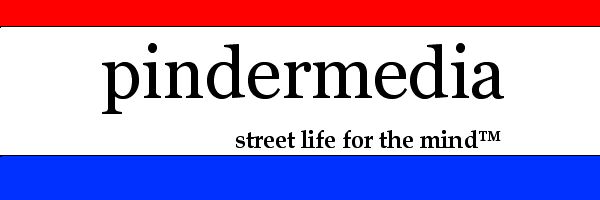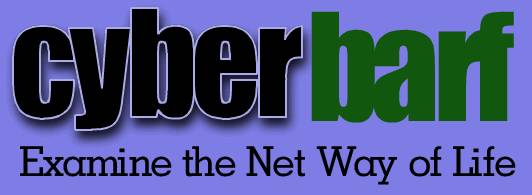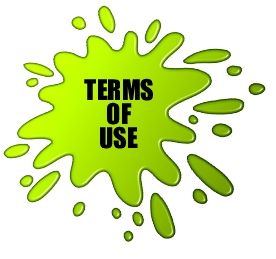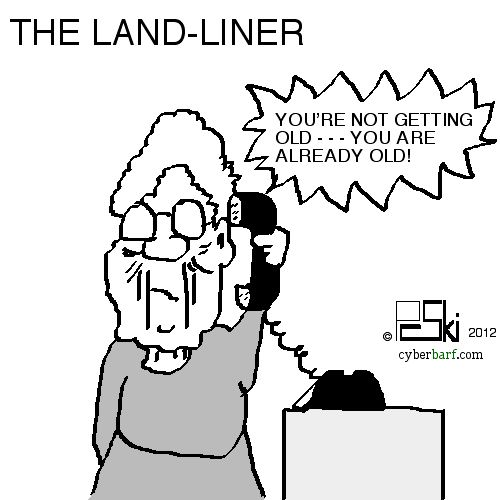|
JANUARY, 2013 IN THIS ISSUE:
THE NEW TV EXPERIENCE INSTA-TAKE INNOVATIONS iTOONS WHETHER REPORT NEW REAL NEWS KOMIX! SHOW HACK!
CYBERBARF T-SHIRTS, MUGS & MORE THANK YOU FOR YOUR SUPPORT! THANK YOUR FOR YOUR CONTINUED SUPPORT.
CYBERBARF
|
|
cyberbarf EXAMINE THE NET WAY OF LIFE For every ending, there is a new beginning: NEW REAL NEWS KOMIX! SHOW HACK! |
|
cyberbarf THE NEW TELEVISION EXPERIENCE ESSAY Every gadget nerd is pining for the new Apple TV. Not the current hobby box for streaming a limited amount of content and net data. People want Apple to change television like it did with music players and tablet devices. People want television viewing to be the Next Cool Thing. Except there is a big problem. As much as people want to sever the expensive cable line to their homes, cable and big media content providers are partners in cable channel viewing across America. Cable companies do not want to cede any control of the home entertainment platform. Big media content providers are investors in many cable channels so they would be hurting their capital investments. Further, studios like the ability to control distribution through known systems such as cable. The studios are fearful that cloud or internet streaming systems will steal content. So cable and content providers are linked together in a profitable joint venture. They like their business model. The business model works. Cable systems have expanded to provide broadband Internet access and telecom services. Telephone companies like AT&T are using their high speed systems to provide broadband access. Both systems rely upon a monthly subscription based user. What people really want is to get rid of the tiered cable channel menu. Consumers would like to purchase all their shows “a la carte” or on demand. Instead of paying for expanded basic package tier to get the Disney Channel to get one or two cartoon shows; a person could just pay to view those shows. This defeats the purpose of television advertising: a concentrated number of viewers watching at the same time. Ratings drives ad rates. A fractured viewing pattern will decrease ratings for programs, which will depress advertising rates. But viewers are used to time shifting their programs by recording them. Some content providers and cable systems now block legal consumer time shift recording under the guise of copyright protection. So it is clear that the cable-content provider model needs to continue to corral viewers on a routine schedule in order to maximize advertising revenue. However, there are new “smart” television sets which in a Big Brother way “spy” on the people watching its screen. Hidden camera and microphone records data on how many people are watching a particular station at any given time. That information is transmitted to a central data center where the information is data mined and packaged for marketing purposes. If television sets can do real-time census of viewers actually watching the TV set, Nielsen or other ratings services will be put out of business. And if these smart television sets can record actual viewer comments on the shows (or the intervening commercials), that is a live, unedited free focus group feedback for advertisers. That is another revenue source for the program distributor. But spying on private citizens in their own homes for commercial is wrong. It should contain the same moral outrage that the studios had for teens who were caught file sharing movies over the net. But the new television experience is being driven by data points. It does not matter if the programs have any entertainment value. It is the viewers themselves that will be treated like fungible commodities, to be bought and sold in the near future. And just like push ads are so annoying when web surfing sites, we can see push programming based on one's viewing habits being put into an algorithm to create pop up advertisements or links to a show some computer program thinks you would like to see. If you watched Survivor, the program could compare to other reality game shows and pop up a link to the new Revenge of the Nerds game show. Instead of just finding the demographics of a particular program, programmers are going to be able to push content directly to each demographic. It almost sounds like the chilling details of a “re-education center” in a dystopian science fiction novel. The rumors of a new Apple TV are wide and vague. Apple, to break the cable system-content provider program lock, would have to make direct deals with each studio to sell its programs, individually or in series blocks, like it does with record labels with iTunes music selections. If you want to see a season of The Walking Dead, it will cost you, say $16.00. If you missed one episode, then that may cost you $1.99. This would be a revolutionary way of buying and viewing television programs. It would be too revolutionary for studios to take and for viewers themselves since they have had access to “free” TV shows since the invention of television broadcasting (people think of cable bills as providing a service, and not individual programs to view). The television networks would cry foul. If people don't watch their programs when they air, they have no viewers and hence no advertisers. Advertisers may also cry foul since it is difficult to determine whether their ads are actually broadcast or seen in an alternative distribution system (since download data has no auditing bureau so fraud could be rampant in the reports). And viewers may not like to spend $2/show or around $4/hour for TV viewing; with the average American watching 3.5 hours of TV a day, times 7 days a week is $98.00/week or $392.00 per month. With the average non-broadband cable bill under $90.00 per month, this would be a huge jump in monthly costs for consumers, a more than 300 percent increase. It is unlikely that there will be many early adopters to the new pay-for-everything TV experience. Costs do matter, especially in consumers buying entertainment.
cyberbarf INSTA-TAKE ARTICLE In December, 2012, Facebook's photo sharing service, Instagram, rocked the digital world by announcing a major change in its Terms of Service policies. Facebook had acquired the service site a mere three months ago. As a public company, Facebook needs to show that it is a business; a revenue increasing operation. So Instagram announced that it would change its policy in regard to the use of user photographs. Instagram stated that as of January 16, 2013, that it would have a perpetual license to sell any user's uploaded photographs without payment or user notification. That means that Instagram would have full use to sell, license and exploit user photographs without permission or paying the user any royalties for their images. What Instagram tried to do was reverse license all of its content from its users. And the public screamed foul. Even with the alleged opt-out option, users were furious that Instagram would take their photographs and sell them to anyone. One commentator said that Instagram was trying to instantaneously turn into a large stock-photo, clip art agency like Getty Images. Companies, advertisers and web sites buy licenses from stock photography houses to use on their materials or web pages. These photography bureaus charge license fees. Instagram's change of policy was meant to cover the site from any user infringement claims by turning a limited license it had into a one that allowed transfers and sub-licenses (i.e. selling user photographs). The Electronic Frontier Foundation called the move a challenge to the concept of informed consent when Instagram changed the rules dramatically and overnight without permission of the owners of the photographs. Copyright law is simple. Any person who takes a photograph is the owner of that image (with limited exceptions for people who are paid to take them by employers or works for hire). That means the owner-photographer is the sole person who controls who can make copies of his image. It is the copies, whether digital or real, that is valuable to a professional photographer. He wants to be paid for his artistic effort. A photographer can sell or license his images to a stock photo service, which acts like an agent or broker, to re-sell those images to media companies and advertising agencies. The photographer receives commissions or royalties on each sale or license. Instagram's plan was to cut out the actual photograph owner in the chain of license fees. Besides the seedy business angle to this story, the lack of permission was particularly offensive to many users. If one uploaded a family vacation photo to their page, Instagram could sell the family image to a different resort hotel, airline or even a porn site. The idea of one's private photographs being used for any purpose is called an invasion of privacy. But in the new Terms section, Instagram said that all users of its service would waive any right to litigate or sue Instagram for any use, disclosure of any user content. If any user was harmed, embarrassed or damaged by Instagram's selling of that person's photographs, the user had no recourse against Facebook. Many celebrities who use Instagram were vocal about Instagram's attempt to make money off their images. They vowed that they would leave the site (which would diminish traffic and page views for other advertising purposes). But again, the scope of one's privacy appears diminished if one uploads personal photographs to a public access web page. It is the commercial exploitation of user privacy that is at the heart of the controversy. The use of images seems to be more personal to users than the current data mining of personal information that Facebook does with its friends on its original site. Other photo sites such as Google+, Picasa and Flickr do not permit the site operators any license to sell uploaded photographs. Those sites merely ask for a license to show or publish your photographs as a part of its own operations and services. In some respects, Instagram is trying to corral an army of free photographers that can be exploited for company profit like the HuffPost did with its unpaid bloggers and contributors. The HuffPost owners and venture capitalists cashed out on the free content from contributors, who recently lost their legal battle for compensation as a result of the original site's sale. But the difference here is that the Huff contributors knew before they published their work that their work was free (to promote the writer's own name, reputation and works). For Instagram, the terms of use of current uploaded photographs (with no sell licensing) would change after the initial user upload. For these various reasons, Facebook relented and said it would not implement the Terms of Service changes in regard to Instagram users. The bad publicity from this sweeping policy change is not new. For most Internet service operators who provide “free” services have large fixed costs to maintain their servers, routers, connections and administration services. Instagram as a free service cannot live off the venture capitalist's seed money if the idea cannot bear its own fruit (enough direct revenue to sustain a profitable business model). And that is the irony of the Internet age: the free network philosophy makes a horribly unprofitable business plan.
cyberbarf INNOVATION ESSAY The History Channel/Popular Mechanics put together a program about the 101 most important or transformative inventions in the history of mankind. Like all list stories, it is subject to personal opinion and WTH? reactions. In the top of human inventions: Number five: the transistor. The show indicated that there are 11 billion transistors per person on the planet today. It continues to revolutionize the areas of electronics and engineering. Number four: the steam engine. To harass the power of steam was man's ability to harness the power of nature at an industrial scale. It fundamentally changed how man traveled, how he worked, and where he lived. Number three: the light bulb. The show recognized that Thomas Edison did not invent the light bulb, but improved it with filament technology to make it work better. As a result, the development of power companies and distribution grids changed mankind in a fundamental way: it made us into nocturnal creatures. Number two: the printing press. When the process of putting ink on a plate filled with movable type to press lasting impressions on a sheet of paper, it created a permanent source of communication and knowledge that could spread ideas, concepts and revolution throughout the world. One could now document history as it happened; lest not to repeat it in the future. Number one: the wheel. The show indicated that the wheel, a round object that turns on an axis, was incorporated into 35 of the list's 101 inventions. The wheel allowed man to move 40 times more weight than dragging an object. The list of the wheel, the printing press, light bulb, steam engine, and transistor may have some merit in some circles. But even inventions need something even more basic - - - the ability of innovation. On the show list, fire was classified as an invention. It was in the top ten. Some anthropologists believe that when man harassed fire, it allowed man to cook food. This new and better protein source may have increased man's brain function by 33 percent. It also gave man the ability to preserve food (smoking) and to live in colder climates (to travel to better habitants). If the basic functions of fire transformed man into a more stable diet and non-nomadic existence, it would have led to a concept we take for granted today: idle time. Time to think about other things than survival needs such as food, water, shelter. In German alpine caverns, archeologists have recently uncovered a wealth of artifacts from 30, 000 years ago. At the time when Homosapiens and Neanderthals shared the same Euro-valleys, early man was carving from mammoth teeth Venus sculptures (of the female figure) and animals. Were these fertility symbols or mere curiosity? Before the concept of cave painting, written language - - - there is evidence that man made detailed art sculpture. It shows that man was aware of his surroundings, and for some reason decided that it was important to create replicas by his own hand. The re-use of primitive tools in order to make decorative artifacts had to be the original spark of creativity, the first sign of innovation. The show also put the Internet at the Number twelve invention. It put penicillin at Number 14. That seems odd. The finding of aspirin, penicillin and vaccines for killer diseases have had more lasting effects on the viability of mankind than the millions Internet web pages. But one has to go back further to see the origin of man's inventive prowess. If not for these major milestones, man would not have evolved and conquered the planet and all other species: Language: the ability to communicate with another person. Whether it be oral or non-verbal, the ability of man to communicate instructions to his fellow man was the most important building block to form tribes, communities and mutual cooperation and protection to sustain early civilization. It would begin traditions and rituals passed down from one generation to the next. It would give everyone some kind of identity. Written language: the ability to store knowledge in a tangible form so that other people can read the symbols and understand the ideas contained on walls, tablets or paper. When man took his ability to see the natural world around him and put it into symbols allowed mankind to think, extrapolate, merge concepts and create new ways of looking at his world. It would allow the spread of ideas, morals, commerce and religious beliefs. It would give everyone an opportunity to bring together bigger communities based upon not physical constraints but on principles. The scientific method: some adventurous, curious or reckless individual decided one day to stick rocks, metals or sand into a glowing fire to see what would happen. From that point in the ashes of the creation of new materials, the forge - - - using fire to transform materials into new materials (tools) led to rapid innovation in the fields of agriculture, art and weaponry (defense). One has to believe that the trial and error method was the first way man tried to manipulate nature by his own hand. But once man found something that worked (like a bellows to make fire hot enough to melt metal and pouring it into sand molds to shape tools), the idea that some process can be constantly repeated with the same end result had to be magical and rewarding. And the process of finding a system that produces a desired result (problem solving) is the foundation for all forms of learning (math, science, industrial processes) through to today's patent examination requirements. Medicine: early man lived in the outdoors or in caves so he had daily chances of being cut, bruised, scraped or injured during the normal course of his activities. Just as today, there were viruses and bacterial infections that could cause serious to fatal conditions. Mankind's ability to understand that certain herbs, roots, berries or barks had healing properties, and then to catalog and remember those remedies to make diagnosis of ailments on one's self or someone in your tribe had to be a monumental advance in community development. Today, when one family member gets the flu, all family members will get sick at some point during that time period. It had to be the same thousands of years ago. The ability to diagnose and then treat an ailment (fever, flu, stomach pains, cuts (with stitches) or broken bones (with splints) had to have led to the first specialization: the medicine man or shaman. Specialization would grow into expertise on the narrowest of subject matter in today's complex society. Curiosity: a desire to know or to learn about things that do not necessarily concern one's self. Without a curious intellect, early man would have not developed more than bands of apes or chimps. To be curious means one is eager to learn, careful, accurate, detailed and interested in a subject. Many animals have traits of curiosity such as a raccoon overturning garbage cans to see what is inside (but that may be learned behavior or instinct to find food). Without man's ability to touch objects, move objects, learn about their properties, and then imagine what they can do with them, no invention would be possible. |
|
THE PINDERMEDIA STORE IS FULL OF FUN T-SHIRTS CLOTHES, HATS AND OTHER ITEMS. CHECK OUT THE STORE FOR ITEMS
SUPPORT cyberbarf VISIT THE CYBERBARF STORE! Prices may vary depending on sales, allotments, inventory. |
|
cyberbarf.com EXAMINE THE NET WAY OF LIFE iToons
|
|
cyberbarf THE WHETHER REPORT |
cyberbarf STATUS |
| Question: Whether cyberMonday holiday shopping will one day surpass Black Friday in sales? |
* Educated Guess * Possible * Probable * Beyond a Reasonable Doubt * Doubtful * Vapor Dream |
| Question: Whether the inconsistent patent rulings for smart phone manufacturers will quell future litigation? |
* Educated Guess * Possible * Probable * Beyond a Reasonable Doubt * Doubtful * Vapor Dream |
| Question: Whether the next development in home television set top box is not cable, but an on-demand Internet based streaming service? |
* Educated Guess * Possible * Probable * Beyond a Reasonable Doubt * Doubtful * Vapor Dream |
|
cyberbarf EXAMINE THE NET WAY OF LIFE |
What!? Doctor Who |
|
SUMMER IS COMING FAST. SURF'S UP WITH THIS CLASSIC T-SHIRT!
FEATURING: THE REAL NEWS IMPACT EDITORIAL CARTOONS WRIGLEYVILLE WAR POLITICS ENDORPHIN RUSH THE DARK ABYSS RANDOM ELECTRONS SPECIALS
FEATURING: THE REAL NEWS ARCHIVES CARTOONS MADAME'S TEA HOUSE THE BAR EXPLORE THE CITY SCAPE UNDER CONSTRUCTION SURPRISES ESTORE SPECIALS
|
|
cyberbarf
THE STEAM PUNK SPECIAL EDITION featured new Music from Chicago Ski & the (audio) Real News: (mp3/4:14 length)
EXAMINING THE NET WAY OF LIFE cyberbarf™ distributed by pindermedia.com, inc. |
TIME TRAVEL BACK
TO THE
NEW THEORIES,
NEW OBSERVATIONS,
NEW ISSUES,
NEW INSIGHT.
New Recaps
at
LOSTHEORY
cyberbarf
Distribution ©2001-2012 pindermedia.com, inc.
All Ski graphics, designs, cartoons and images copyrighted.
All Rights Reserved Worldwide.























